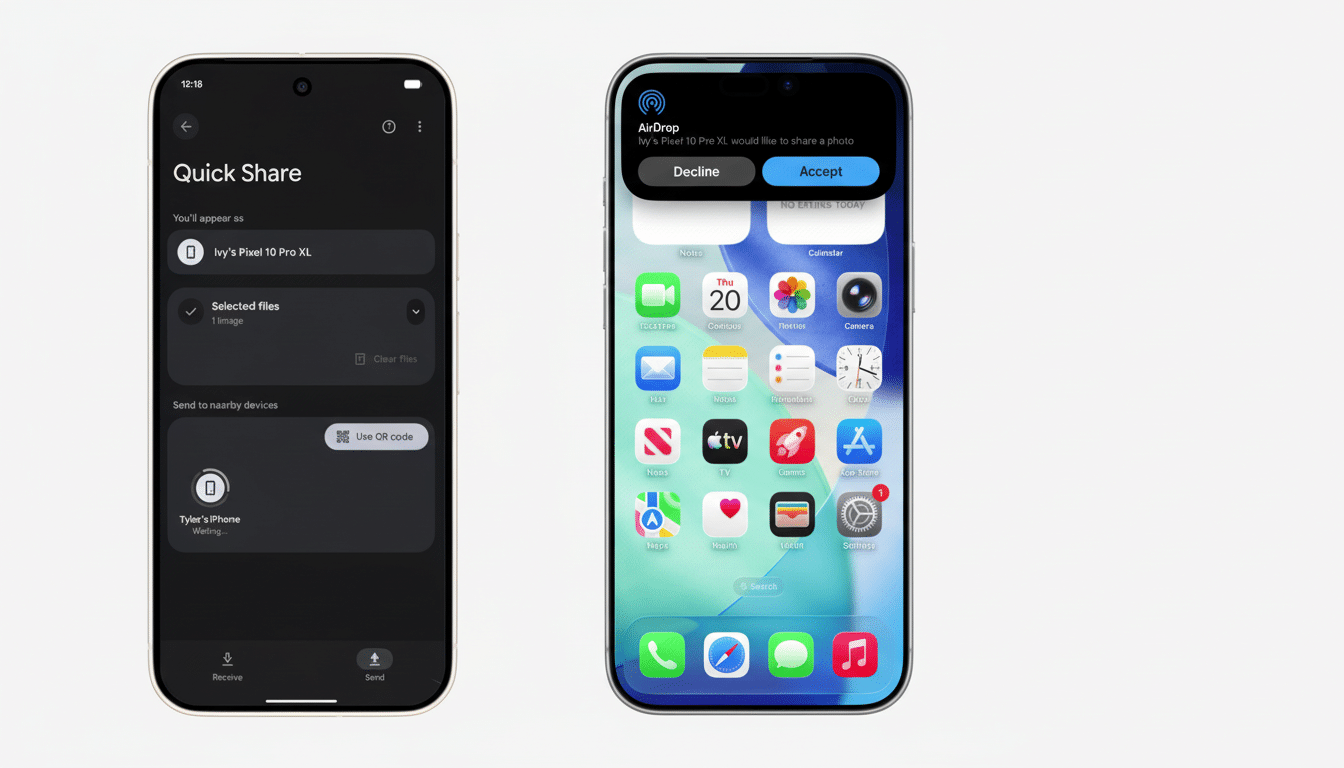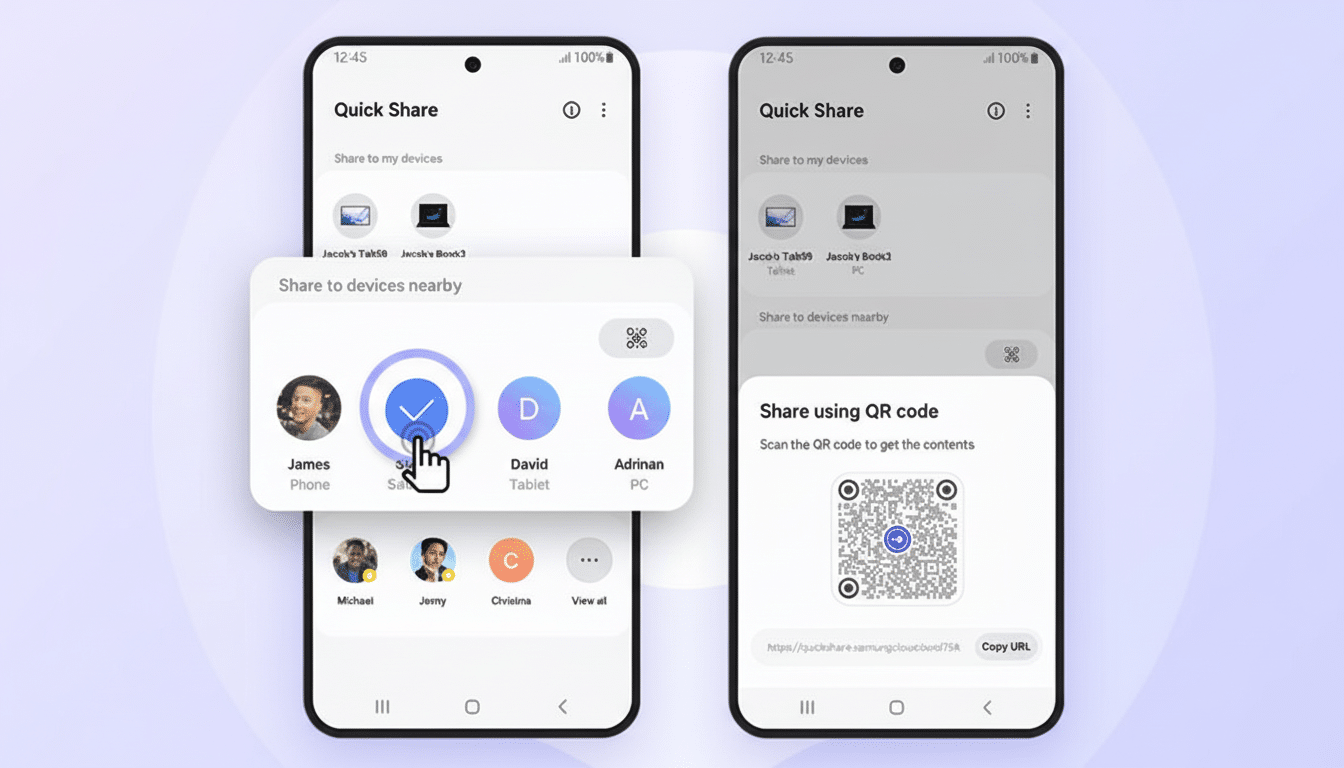Google is telling us that Android’s Quick Share can now talk to Apple’s AirDrop, giving users the cross-platform file sharing functionality they’ve been demanding for years — and it did so without any overhaul or even support from Apple itself.
In a statement, Google acknowledged that it created the compatibility separately to address frustrations about interoperability between the two ecosystems for years.
- Why AirDrop and Quick Share interoperability matters
- How Google likely pulled it off without Apple support
- What users can expect when Quick Share talks to AirDrop
- Security and privacy considerations for cross‑platform sharing
- Industry and regulatory context around interoperability moves
- The bottom line on Quick Share and AirDrop compatibility

The move addresses one of the last day-to-day discomforts in mixed households and workplaces. For a decade, AirDrop has been an iPhone and Mac staple, while Android users leaned on Quick Share or third-party apps. In between sits the abyss of not wanting to email yourself some video or throw it in the cloud and plug in a USB cable just because you wanted to get a file across the aisle.
Why AirDrop and Quick Share interoperability matters
Android runs on around 70% of the world’s smartphones, according to IDC, with much of the rest handled by Apple. That division is reflected in families, schools and workplaces where devices constantly intermingle. Consumer researchers have long highlighted ecosystem conveniences — such as AirDrop and iMessage — as “stickiness” factors. Quick Share–AirDrop support takes one of those sticky edges off itself and might actually cut some daily friction in practice.
It also alleviates the productivity tax in bring‑your‑own‑device environments. IT teams who support Chromebooks, Windows laptops, iPhones and Android phones have relied on either cloud connections or MDM (mobile device management) solutions to transfer files. The ability to hand a file to a coworker without jumping into some web browser or bloated app brings overhead down and makes the “hand a file to a colleague” moment nice and snappy.
How Google likely pulled it off without Apple support
Quick Share is built on top of Google’s Nearby platform, which makes use of Bluetooth Low Energy for discovery and Wi‑Fi (including Wi‑Fi Direct) for fast sharing. AirDrop is built on Apple Wireless Direct Link (AWDL), an opaque peer‑to‑peer protocol that runs over Wi‑Fi with Bluetooth assisting for presence.
Meanwhile, AirDrop functionality was added by Google itself. And although it hasn’t disclosed any technical details, the work of the Secure Mobile Networking Lab at TU Darmstadt and presentations at USENIX Security have documented AWDL’s behavior and its performance characteristics in enough detail that it can be reverse engineered, and even re‑implemented. In reality, having an AirDrop‑like network would really mean speaking the same discovery language (i.e., Bluetooth beacons and mDNS service advertisements) as AirDrop, and negotiating a Wi‑Fi P2P link with compatible settings.
The harder part is durability. As it’s up to Apple to modify AWDL, Google’s implementation has to be resilient against small protocol changes. That’s why this news is as much of an engineering statement as a product feature: Google is basically agreeing to monitor Apple updates to ensure the bridge remains viable.
What users can expect when Quick Share talks to AirDrop
On Android, Quick Share would expose nearby Apple devices as potential recipients to send items to when visibility is correctly set, and vice versa, in this case allowing native share sheets to finish the job. The interface will vary based on device settings (like “Contacts Only” versus “Everyone for 10 Minutes” on AirDrop and a similar set of controls in Quick Share) but the net effect is faster, local transfer without cloud uploads.

The photo and video transfers should ideally tend more toward AirDrop expectations than messaging apps or email. According to academic measures of AWDL, transfer times are on the order of hundreds of Mbps in optimal circumstances, and Quick Share over Wi‑Fi Direct can deliver similarly high rates, so most short‑range transfers complete well within a second rather than a minute.
Since Quick Share is a product of Google Play services and is already baked into Chromebooks as well as available on a Windows client, you can also anticipate that once compatibility fires up on the server and app side. Ask your child if they’ve downloaded an application called “Google Quick Search Box.” Inquire with them about how this app works — it might prompt some good conversation around internet safety! Mixed fleets of Macs, iPhones, Pixels and Galaxy devices could see immediate improved performance.
Security and privacy considerations for cross‑platform sharing
Visibility controls are required in both, and all the more so in a cross‑platform world. AirDrop’s “Contacts Only” mechanism had previously been criticized by researchers at TU Darmstadt for possibly disclosing hashed identifiers, and Apple has in fact updated prompts and defaults. Quick Share allows you to restrict visibility between your devices, contacts, or for a short public window. Users are encouraged to verify these settings prior to activating open discovery in public settings.
On the transport side, AirDrop makes use of encrypted connections and mutual verification steps; Quick Share also encrypts transfers. However, any new compatibility layer should be carefully looked into. Enterprise admins will want to vet policy interactions with MDM and DLP tools to be sure that sensitive files aren’t shared outside of the approved channels.
Industry and regulatory context around interoperability moves
This is coming against a backdrop of broader pressure for interoperability. The two companies have previously been on the same page with unwanted Bluetooth tracker alerts, and are edging towards messaging parity through RCS support. In the EU, too, the Digital Markets Act has raised hopes for gatekeepers to minimize ecosystem lock‑in — even if it doesn’t mandate cross‑platform file sharing outright.
Apple did not immediately respond to a request for comment on Google’s announcement. It could embrace that new reality, or it could change AWDL to make compatibility more difficult. Each path has trade‑offs: breaking changes lack understanding, cooperation would indicate a deeper transition to openness.
The bottom line on Quick Share and AirDrop compatibility
Quick Share’s new ability to communicate with AirDrop is the kind of practical victory for anyone living in a mixed device world — and a symbolic victory for interoperability. Google did the heavy lifting itself, gambling that users will reward platforms which meet somewhere in between. Now it’s on Apple, and how well this connection holds up in the wild.

